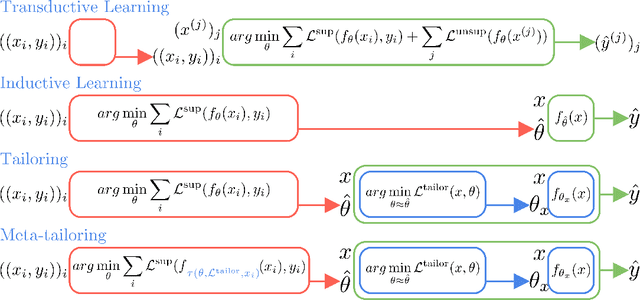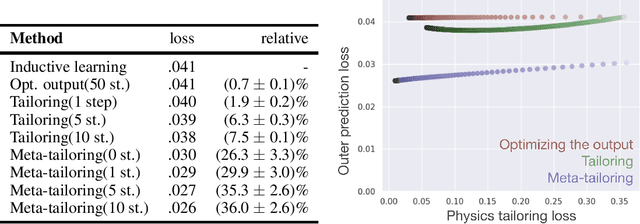Nurullah Giray Kuru
Tailoring: encoding inductive biases by optimizing unsupervised objectives at prediction time
Oct 14, 2020


Abstract:From CNNs to attention mechanisms, encoding inductive biases into neural networks has been a fruitful source of improvement in machine learning. Auxiliary losses are a general way of encoding biases in order to help networks learn better representations by adding extra terms to the loss function. However, since they are minimized on the training data, they suffer from the same generalization gap as regular task losses. Moreover, by changing the loss function, the network is optimizing a different objective than the one we care about. In this work we solve both problems: first, we take inspiration from \textit{transductive learning} and note that, after receiving an input but before making a prediction, we can fine-tune our models on any unsupervised objective. We call this process tailoring, because we customize the model to each input. Second, we formulate a nested optimization (similar to those in meta-learning) and train our models to perform well on the task loss after adapting to the tailoring loss. The advantages of tailoring and meta-tailoring are discussed theoretically and demonstrated empirically on several diverse examples: encoding inductive conservation laws from physics to improve predictions, improving local smoothness to increase robustness to adversarial examples, and using contrastive losses on the query image to improve generalization.
 Add to Chrome
Add to Chrome Add to Firefox
Add to Firefox Add to Edge
Add to Edge